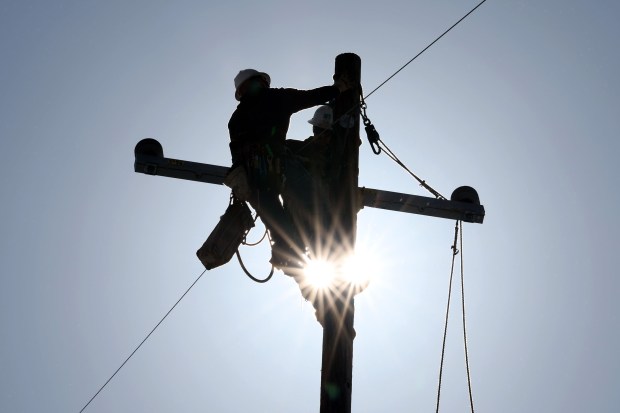OAKLAND — PG&E bills are heading lower this month as some costs related to wildfires and emergency responses start to recede and vanish from the utility’s rate base.
Customers can expect monthly electricity costs to drop by an average of $5 for the typical residential ratepayer who uses 500 kilowatt hours a month and isn’t on a subsidized billing plan. That equates to a 2.1% decrease.
Gas bills are slated to drop an average of 39 cents a month for the typical customer, which equates to a decline of 0.4%. These calculations apply to customers who use 31 therms a month.
“These reduced bills are significant because no more rate changes are expected in 2025,” said PG&E spokesperson Mike Gazda. “Bills are expected to go down in 2026.”
In April 2024, PG&E Chief Executive Officer Patricia Poppe told this news organization, “We see a future where customers’ bills can start to come down.”
Residential electric rates have dropped three times over the past 15 months, according to the utility.
The Utility Reform Network consumer group, known as TURN, noted that PG&E’s current reduction in monthly bills compares poorly to the trend of recent years.
At the time Poppe offered the prediction, bills had been rising by more than 20% annually, the result of a series of approvals by the state Public Utilities Commission, PG&E’s primary regulatory supervisor.
“PG&E does not deserve credit for a temporary reduction in monthly bills, which is the result of customers finally paying off some of the billions in corporate overspending,” said Mark Toney, TURN’s executive director. “PG&E announcing that electricity bills will be coming down by $5 a month is cold comfort.”
Starting in January, the average monthly bill for a typical residential customer who received combined electric and gas services from PG&E was $295 a month. That was $1 higher than the $294 a month that customers were paying in January 2024.

Yet the average bill at the outset of 2025 also represented a dramatic turnaround from the increases ratepayers had previously experienced.
The average that customers paid in January 2024 for combined services was 22% higher than the $241 that customers were paying in January 2023.
The utility also hopes to save money through alternative sources of insurance as well as low-cost financing. PG&E recently landed a federal energy loan guarantee that would enable it to scout for relatively inexpensive sources of financing for loans.
Oakland-based PG&E said its customers are also slated to receive a bill credit in October that will amount to a reduction of $58.23 for that month. This is as a result of the California Climate Credit that is applied to monthly bills twice a year – in April and October.
The investor-owned utility said that flat or lower monthly bills for its customers contrast with the nationwide trends as sketched out by the U.S. Energy Information Administration, which is forecasting double-digit increases nationwide for electricity prices.
“Retail electricity prices have increased faster than the rate of inflation since 2022, and we expect them to continue increasing through 2026,” the U.S. EIA stated in a May report.
The tech industry’s hunger for data centers is becoming a driver for higher electricity bills around the country.
PG&E said it would continue to scout for ways to reduce costs.
In recent years, these efforts have included savings of about $2.5 billion in operating and capital costs through the use of new technologies such as drones to inspect equipment and bundle required work into fewer jobs.
Ratepayers are also expected to see ongoing reductions in real estate costs as PG&E seeks to reduce its corporate footprint.
PG&E’s shrinking space requirements are exemplified in part by the utility’s decision to exit its San Francisco headquarters campus, sell that complex of buildings, and then occupy and eventually buy an office tower in downtown Oakland. PG&E bought the Oakland office tower and an adjacent property in June for $985.5 million.
The company estimated that it would be able to save $400 million through a more efficient operation in a single office tower and that it would pass the savings along to customers over a five-year period.
“While we continue making progress to stabilize electric prices for our customers, we know there is more work to do,” said PG&E Chief Sustainability Officer Carla Peterman, a former commissioner with the state PUC.
Originally Published:
